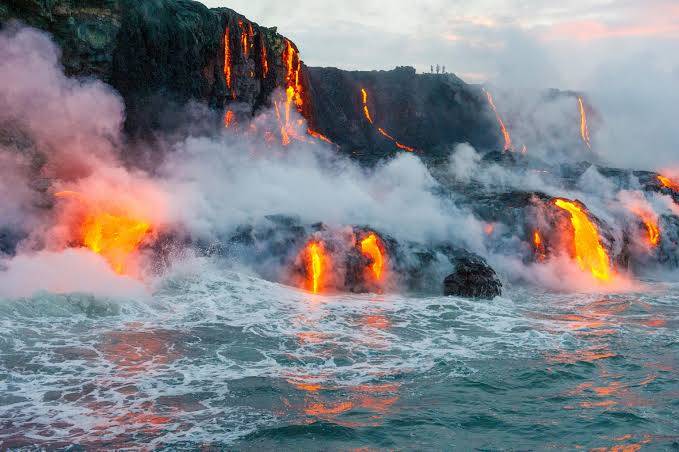
We were approaching the visitor center at the Hawaii Volcanoes National Park with some trepidation. The volcano that lay ahead of us, Kilauea, had spewed lava just a month prior. The last time we were on the Big Island of Hawaii, two decades ago, a river of red lava was going toward the ocean as we drove past it. It had lit up the night, suffusing it with a surreal feeling.
This time we were visiting the volcano on a sunny afternoon. The quiet setting belied a thought that was in my mind. According to Hawaiian folklore, a goddess called Pele resides within the crater of this volcano, which rises 4,000 feet above sea level. She is the goddess of fire and volcanoes. Tradition has it that Pele appears as a young woman but sometimes as an older woman with white hair to warn passersby if an eruption is imminent. She disappears the moment they try to chat with her. Her wrath descends on anyone who tries to remove lava rocks from the volcano.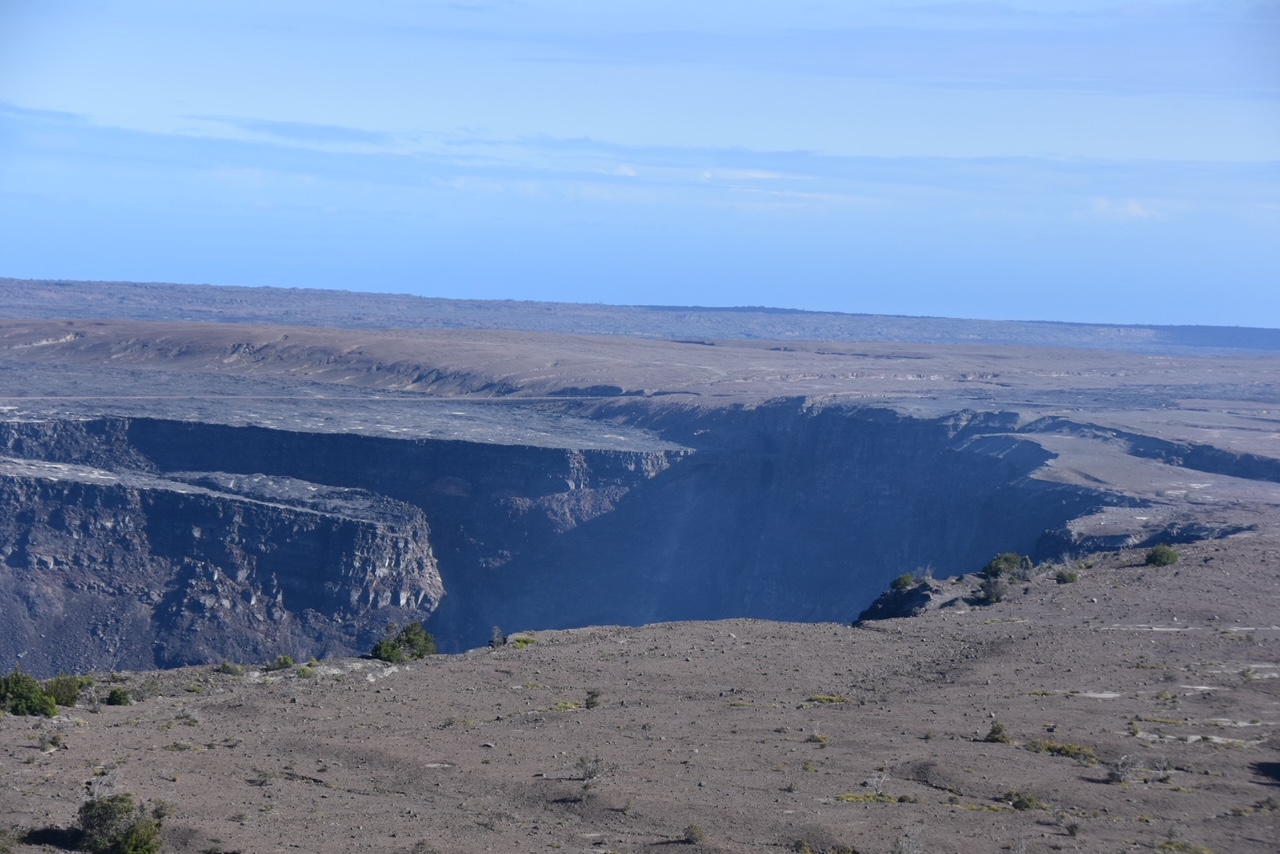
As we approached the volcano, we saw plumes coming out of the brittle earth that lay at the summit. They resembled the plumes of steam that we had seen coming out of the earth at El Tatio, site of the geysers in the High Andes mountains of Chile. However, these were plumes of sulphur and they came with an acrid odor. A sign warned us that they posed a health danger to everyone, especially to those with cardiac or pulmonary conditions. We donned our pandemic masks.
After walking through the plumes, we drove to the crater and parked on the side. It was deceptively calm and peaceful. Had we not seen videos and pictures of what it looked like when it erupted, we would have mistaken it for yet another mountaintop. The brochure we picked up at the visitor center reminded us, “Volcanoes are monuments to Earth’s origin, evidence that primordial forces are still at work.”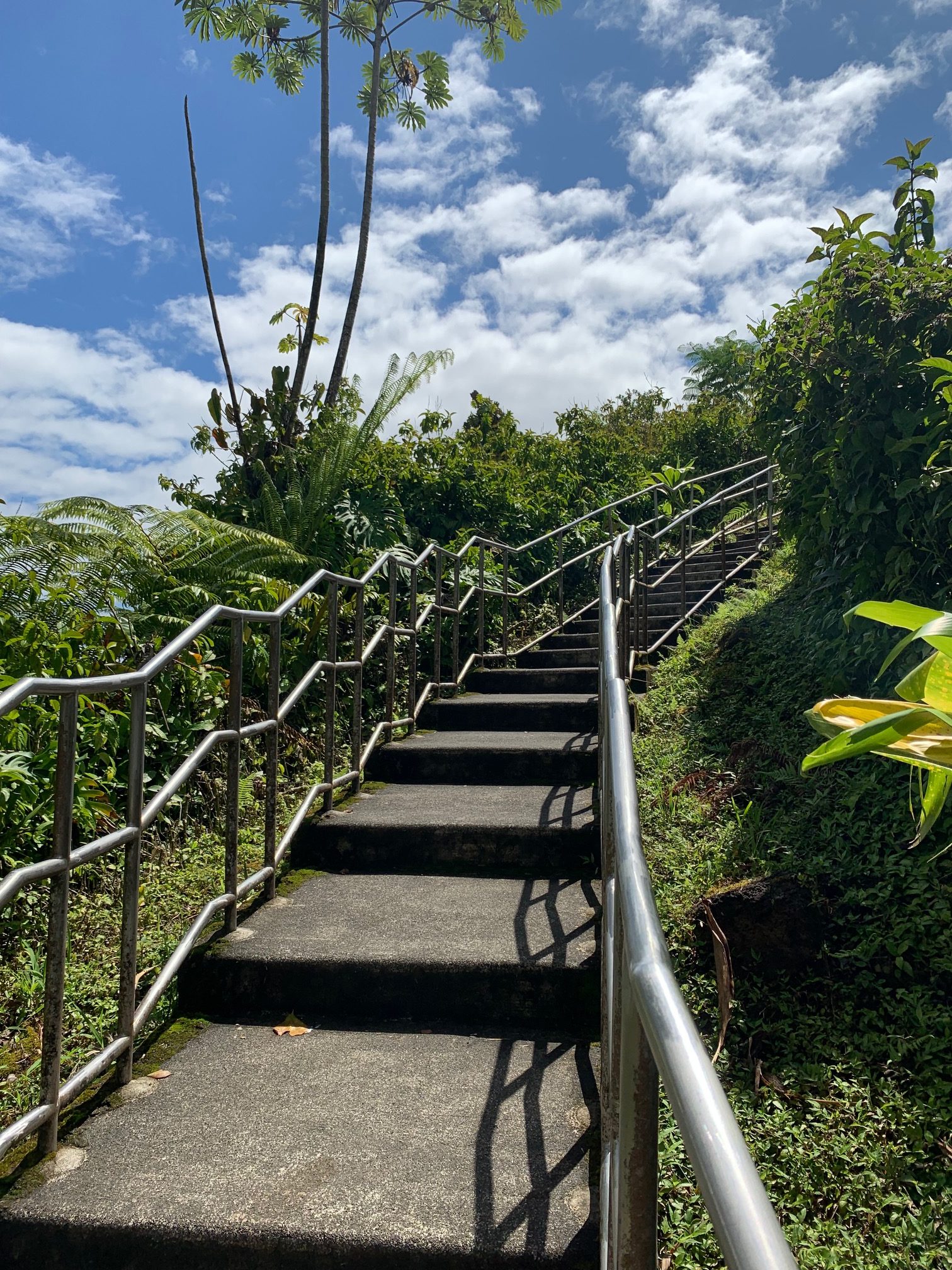
It had taken a long drive for us to get from our hotel to the volcano. We had stopped in Hilo for lunch. All the restaurants were full. We ended up eating a local Hawaiian meal at the farmers market. Then we headed to the volcano. Some of the roads were closed because the volcano had been active just a month ago. At one point, we were caught in a loop. Google maps had stopped working since the internet was very weak and we did not have a paper map with us.
Hawaii lies in the Pacific Ocean, a five-hour flight from San Francisco. The last state to join the US, it is comprised of four major and two minor islands. I have had the good fortune of visiting it some two dozen times since my first visit in 1992. What had kept me from going there earlier was a thought that they were either avid swimmers, or snorkelers of scuba divers who went there. Since I was neither, I had ventured there until a client invited me over.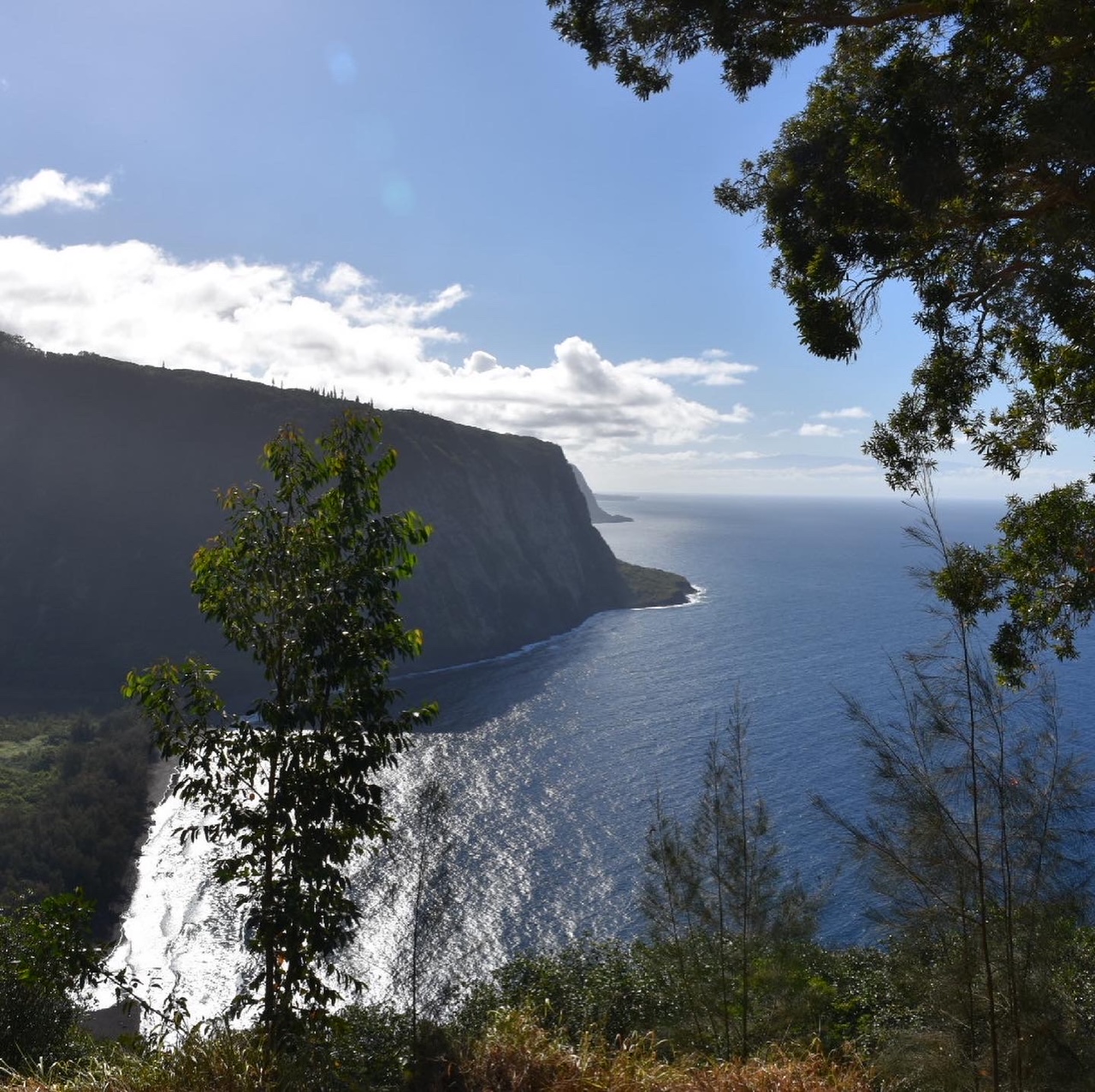
It was then I discovered that there was much more to Hawaii. It had tropical breezes and enchanting sunsets. You could take a walk along the innumerable sandy beaches and feel the sand in between your toes. Or lay on the beach and stare at the sky. At any time of the day, you could enjoy the tropical cuisine and the warmth of the locals.
When our plane landed in Kona, we realized we had arrived on the Big Island. There was no jet way for the Boeing 767. We had to take the stairs to get off the plane. We rented a car and drove to our hotel on the Kohala Coast. We arrived just in time to grab a sushi meal on the patio. It had been a long day and we were feeling a bit tired but the meal perked us up. What really perked us was the magical sunset over the ocean that followed.
A couple of days later we returned to the patio for a second sushi meal. The sunset was equally awesome but what came next was even more amazing. Just above the Palm trees, brightening the night sky, was the crescent moon. It was located near the planet Venus. The two seemed to be in a celestial embrace.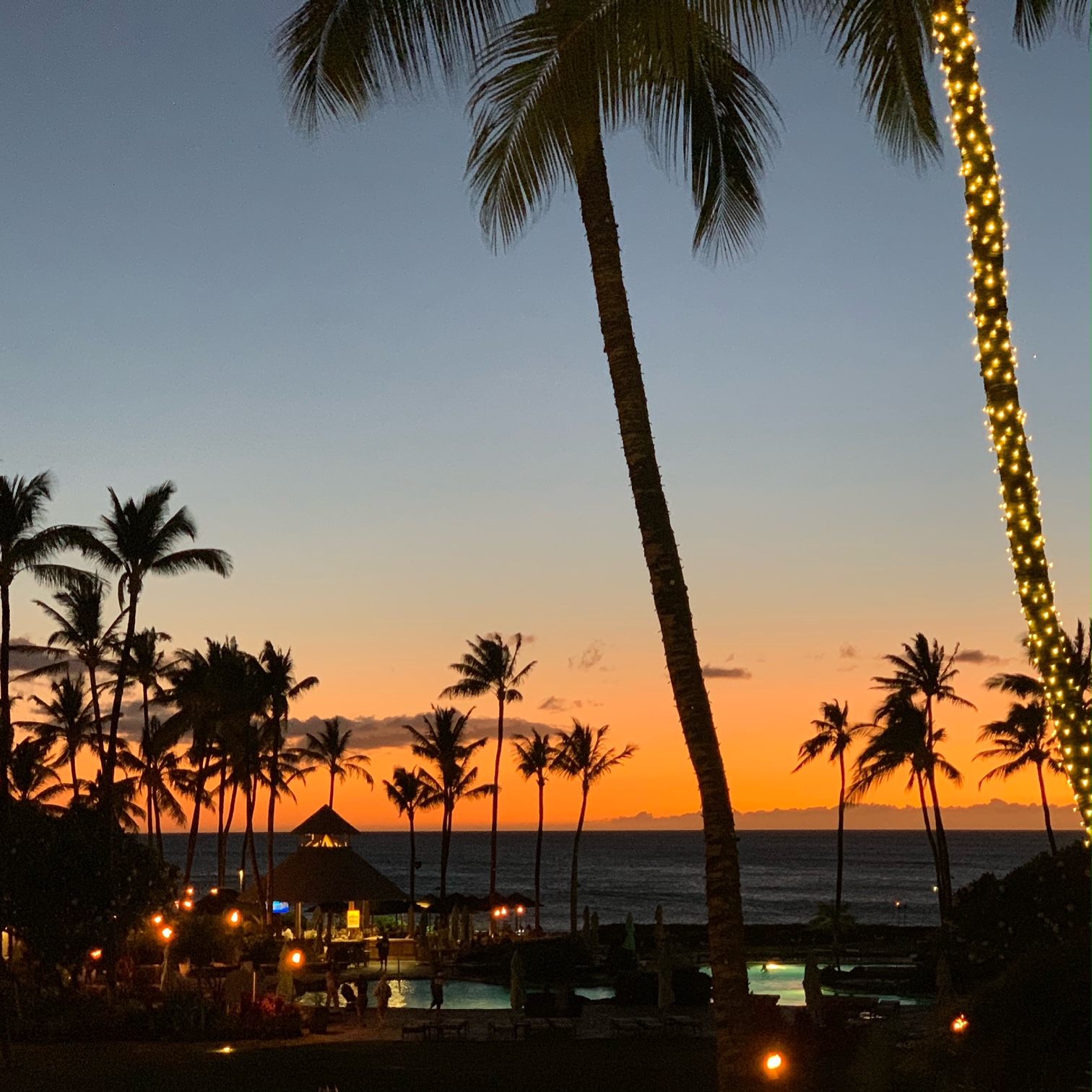
There are at least two famous lookouts on the Big Island. They give you a view of the valleys that lie below. The hike is very steep and can be skipped by riding down in a 4X4. The first lookout we visited was Waipio. The second one was Pololu. Both provided fascinating views but the steep hikes deterred us from venturing down toward the sea.
Hawaii has a tropical botanical garden that’s definitely worth a visit. You climb down 500 feet along the Boardwalk at a steep angle. Once in the garden, you are surrounded by many different species of plants overflowing with plumage. We spotted Anthurium, Bromelaid, Ginger, Hibiscus, Heliconia, and the Spider Lily. At the end, we were rewarded with a view of the waters lapping against a sandy beach.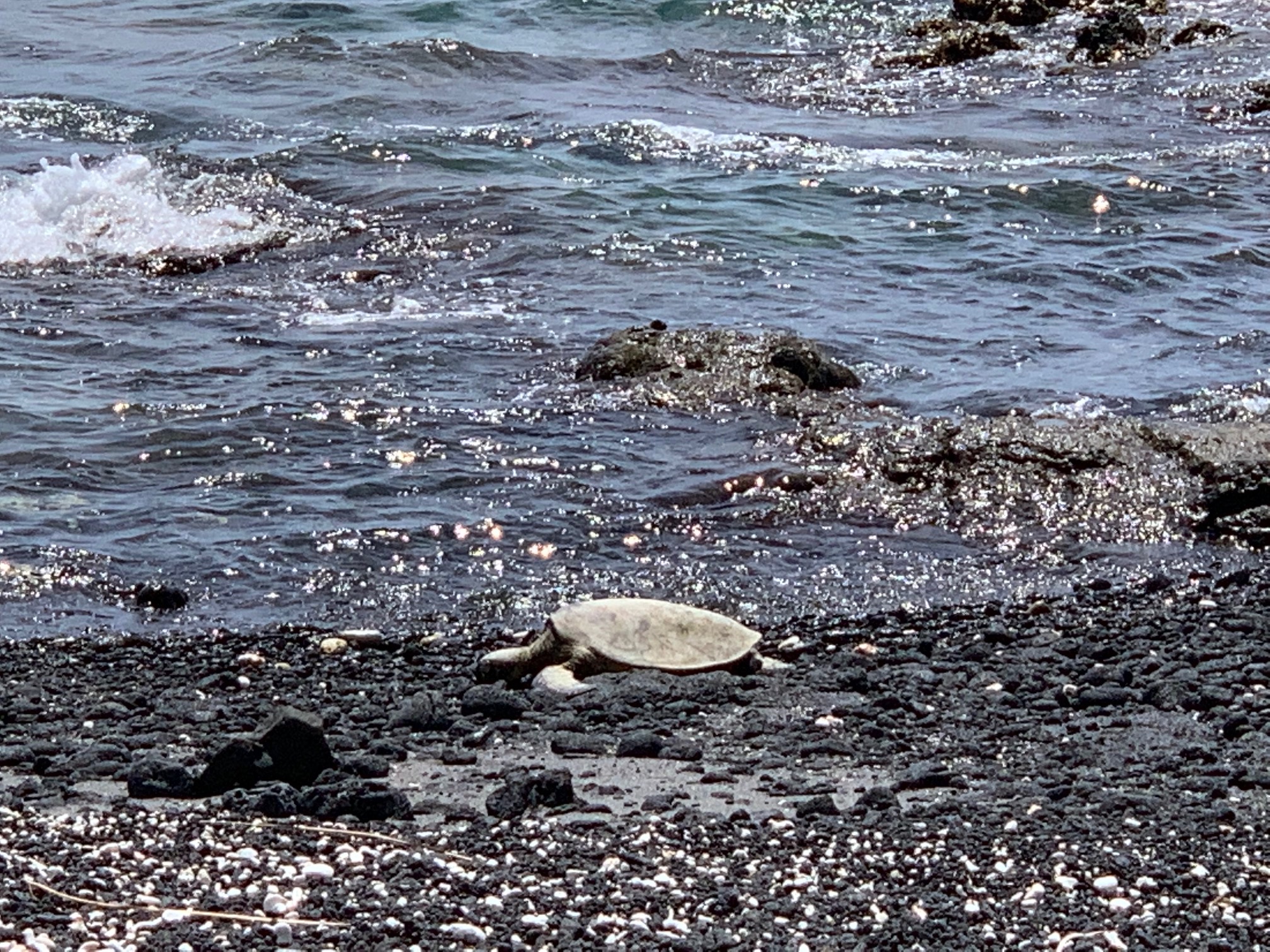
Every day we hiked along the oceanfront. One afternoon, we spotted two green “Honu” turtles lying on the beach. One evening, once the sun had set, we saw the fins of an unidentifiable sea creature breaking through the waves. Was it a Manta Ray?
On our last evening, we took a cruise in a sailboat. It was a cloudy evening and I was concerned that the sunset would be dull. A crewmember told me, “Grey skies are followed by dramatic sunsets.” He was right. What followed was the most enchanting sunset of the trip. It was a great way to round off the holiday.
This time we were visiting the volcano on a sunny afternoon. The quiet setting belied a thought that was in my mind. According to Hawaiian folklore, a goddess called Pele resides within the crater of this volcano, which rises 4,000 feet above sea level. She is the goddess of fire and volcanoes. Tradition has it that Pele appears as a young woman but sometimes as an older woman with white hair to warn passersby if an eruption is imminent. She disappears the moment they try to chat with her. Her wrath descends on anyone who tries to remove lava rocks from the volcano.

As we approached the volcano, we saw plumes coming out of the brittle earth that lay at the summit. They resembled the plumes of steam that we had seen coming out of the earth at El Tatio, site of the geysers in the High Andes mountains of Chile. However, these were plumes of sulphur and they came with an acrid odor. A sign warned us that they posed a health danger to everyone, especially to those with cardiac or pulmonary conditions. We donned our pandemic masks.
After walking through the plumes, we drove to the crater and parked on the side. It was deceptively calm and peaceful. Had we not seen videos and pictures of what it looked like when it erupted, we would have mistaken it for yet another mountaintop. The brochure we picked up at the visitor center reminded us, “Volcanoes are monuments to Earth’s origin, evidence that primordial forces are still at work.”

It had taken a long drive for us to get from our hotel to the volcano. We had stopped in Hilo for lunch. All the restaurants were full. We ended up eating a local Hawaiian meal at the farmers market. Then we headed to the volcano. Some of the roads were closed because the volcano had been active just a month ago. At one point, we were caught in a loop. Google maps had stopped working since the internet was very weak and we did not have a paper map with us.
Hawaii lies in the Pacific Ocean, a five-hour flight from San Francisco. The last state to join the US, it is comprised of four major and two minor islands. I have had the good fortune of visiting it some two dozen times since my first visit in 1992. What had kept me from going there earlier was a thought that they were either avid swimmers, or snorkelers of scuba divers who went there. Since I was neither, I had ventured there until a client invited me over.

It was then I discovered that there was much more to Hawaii. It had tropical breezes and enchanting sunsets. You could take a walk along the innumerable sandy beaches and feel the sand in between your toes. Or lay on the beach and stare at the sky. At any time of the day, you could enjoy the tropical cuisine and the warmth of the locals.
The most populated island is Oahu on which Honolulu is located. The greenest island is Kauai. The most “touristy” island is Maui. By far the most exotic island is the Big Island.
When our plane landed in Kona, we realized we had arrived on the Big Island. There was no jet way for the Boeing 767. We had to take the stairs to get off the plane. We rented a car and drove to our hotel on the Kohala Coast. We arrived just in time to grab a sushi meal on the patio. It had been a long day and we were feeling a bit tired but the meal perked us up. What really perked us was the magical sunset over the ocean that followed.
A couple of days later we returned to the patio for a second sushi meal. The sunset was equally awesome but what came next was even more amazing. Just above the Palm trees, brightening the night sky, was the crescent moon. It was located near the planet Venus. The two seemed to be in a celestial embrace.

There are at least two famous lookouts on the Big Island. They give you a view of the valleys that lie below. The hike is very steep and can be skipped by riding down in a 4X4. The first lookout we visited was Waipio. The second one was Pololu. Both provided fascinating views but the steep hikes deterred us from venturing down toward the sea.
Hawaii has a tropical botanical garden that’s definitely worth a visit. You climb down 500 feet along the Boardwalk at a steep angle. Once in the garden, you are surrounded by many different species of plants overflowing with plumage. We spotted Anthurium, Bromelaid, Ginger, Hibiscus, Heliconia, and the Spider Lily. At the end, we were rewarded with a view of the waters lapping against a sandy beach.

Every day we hiked along the oceanfront. One afternoon, we spotted two green “Honu” turtles lying on the beach. One evening, once the sun had set, we saw the fins of an unidentifiable sea creature breaking through the waves. Was it a Manta Ray?
On our last evening, we took a cruise in a sailboat. It was a cloudy evening and I was concerned that the sunset would be dull. A crewmember told me, “Grey skies are followed by dramatic sunsets.” He was right. What followed was the most enchanting sunset of the trip. It was a great way to round off the holiday.
